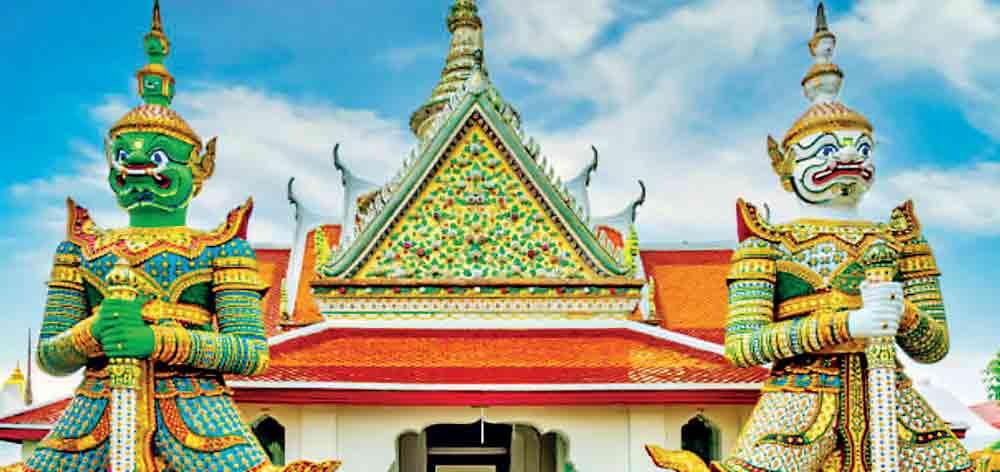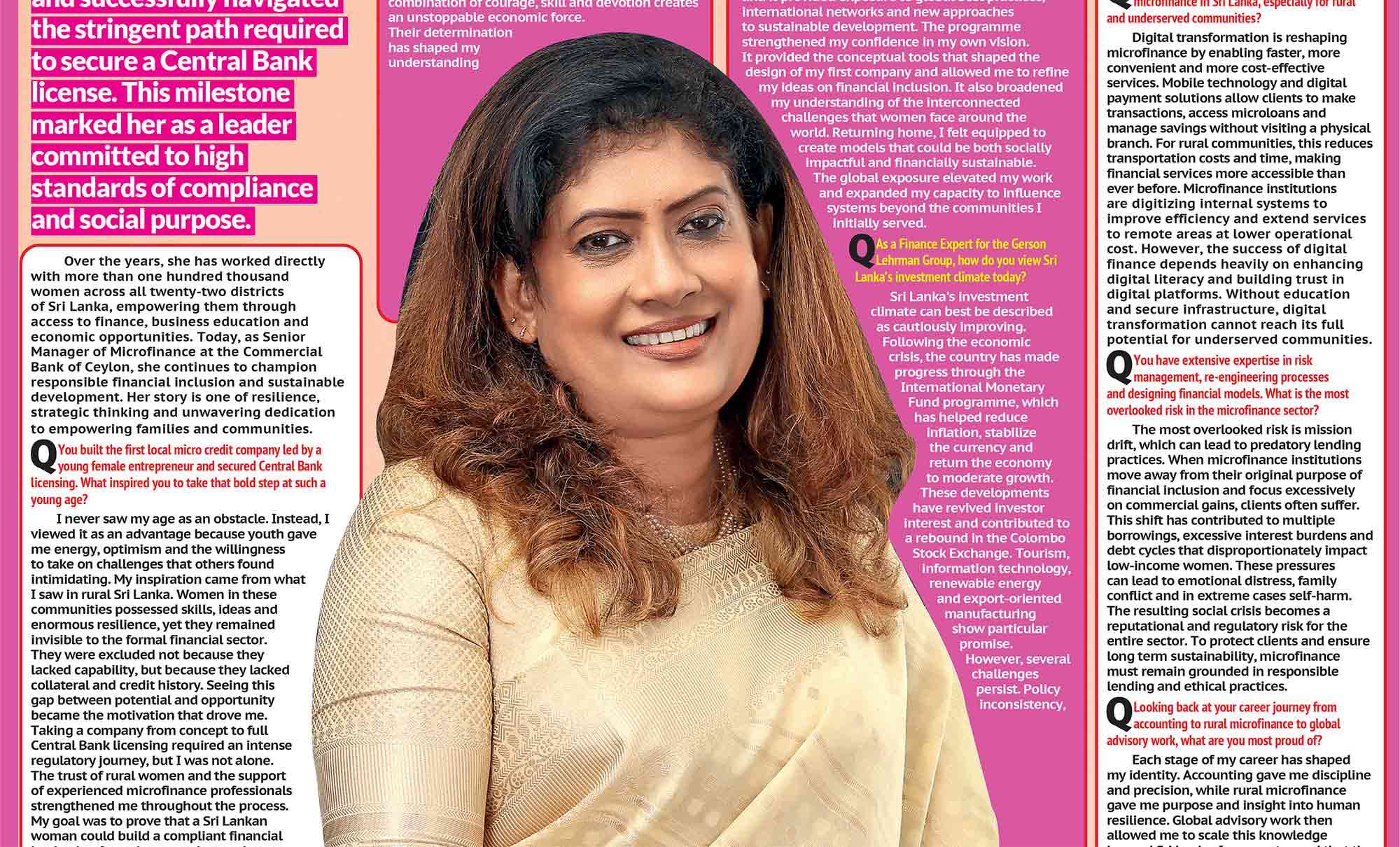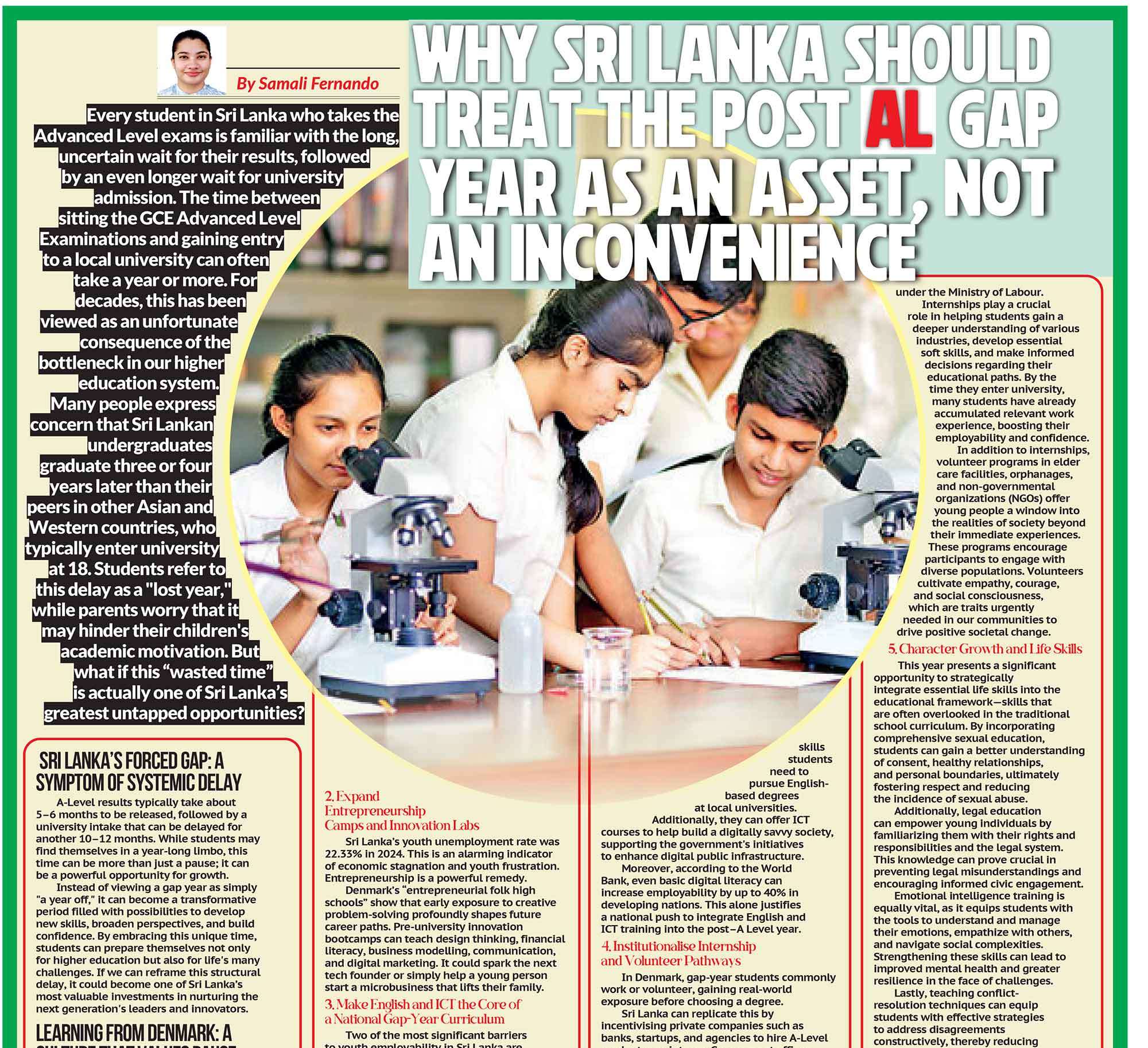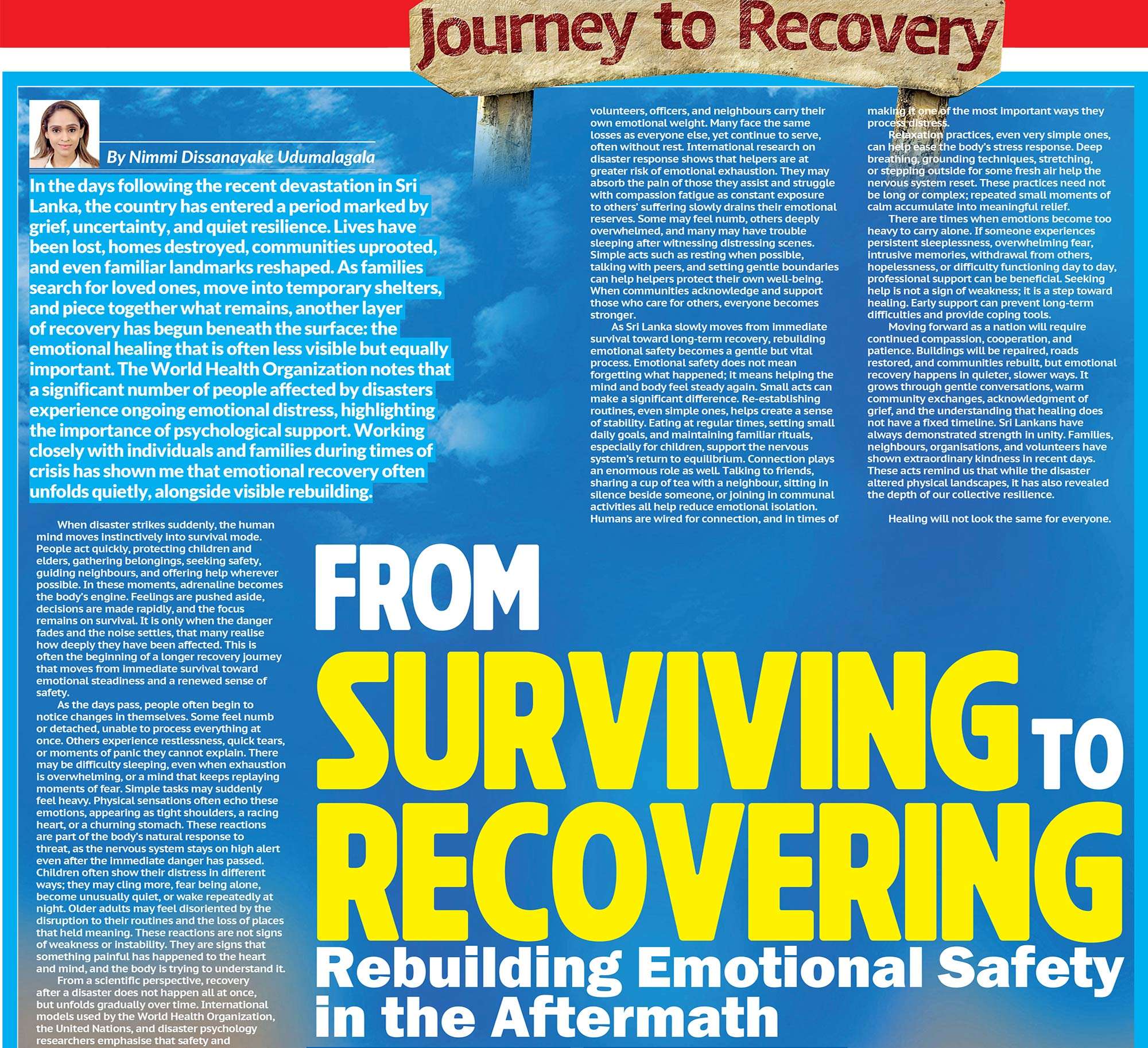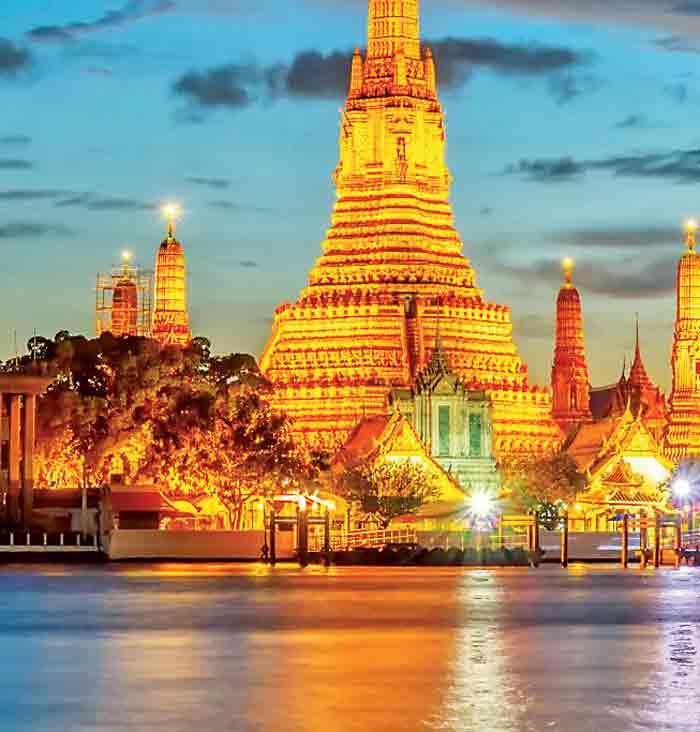
There are cities that pulse with modern energy, where every street corner hums with life and then there are places that whisper stories of the past while still embracing the present. Bangkok, Thailand’s glittering capital, is one of those rare cities where the old and new coexist in harmony. Amid its towering skyscrapers, neon lights, and bustling street markets lies a place that feels suspended in time Wat Arun, the Temple of Dawn.
Rising gracefully on the western bank of the Chao Phraya River, Wat Arun is not just another temple; it’s a symbol of Thailand’s soul. It’s one of those places that seem to glow from within a serene sanctuary of peace and beauty amid the city’s energetic chaos. Whether you see it under the soft blush of sunrise or the golden hue of sunset, Wat Arun never fails to mesmerize.
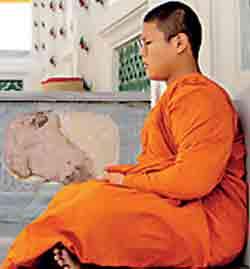 Wat Arun, officially known as Wat Arun Ratchawararam Ratchawaramahawihan, takes its name from Aruna, the Indian god of dawn. The story goes that King Taksin, after leading the resistance against Burmese invaders in the 18th century, arrived at this very site at sunrise. The first light of dawn reflecting on the temple’s towers symbolized hope and a new beginning for Siam (now Thailand).
Wat Arun, officially known as Wat Arun Ratchawararam Ratchawaramahawihan, takes its name from Aruna, the Indian god of dawn. The story goes that King Taksin, after leading the resistance against Burmese invaders in the 18th century, arrived at this very site at sunrise. The first light of dawn reflecting on the temple’s towers symbolized hope and a new beginning for Siam (now Thailand).
From that moment, Wat Arun became more than just a temple it became a living symbol of renewal. Today, it still carries that same energy. When the first rays of the morning sun hit its intricate porcelain tiles, the entire temple seems to awaken, shimmering with a pearly glow that has captivated visitors for centuries.
At first glance, what strikes you most about Wat Arun is its central prang (tower) a majestic 70-meter spire adorned with colorful porcelain and seashells. It rises high above the river, visible from nearly every point along the water. But it’s only when you get closer that you notice the incredible detail. Every inch of the temple is covered with delicate floral patterns, Chinese ceramics, and pieces of colored glass that sparkle in the sunlight like tiny stars.
The craftsmanship is extraordinary. Imagine artisans, centuries ago, carefully embedding each fragment of porcelain into stucco, creating designs that flow like a living mosaic. The result is breathtaking a masterpiece that captures both Thai and Khmer architectural influences, with an elegance that feels eternal.
Four smaller towers surround the main prang, each representing a guardian of the universe, while mythical creatures, demons, monkeys, and celestial beings are sculpted along the base. These figures aren’t just decorative; they tell ancient stories, blending Buddhist symbolism with local mythology.
As you climb the steep staircase of the central tower (and it is steep!), you’re rewarded with a panoramic view that’s nothing short of magical. Below you, the Chao Phraya River winds lazily through the city, boats gliding over its shimmering surface.
Across the water, the Grand Palace and Wat Pho stand in dignified splendor. It’s a view that captures the heart of Bangkok, a perfect balance of spirituality, history, and life. Wat Arun is known as the Temple of Dawn, but some say it’s even more enchanting at sunset. As the sun dips behind the city, the temple’s porcelain towers glow with a warm amber light, reflecting gently on the river. The sky shifts from orange to pink to deep purple, and the temple seems to radiate a quiet, golden serenity.
In the evening, as darkness falls, the temple is illuminated with soft spotlights that make it appear almost ethereal, a vision of light floating on the river. Across the water, visitors sit at riverside cafés, sipping Thai iced tea or coconut juice, watching Wat Arun shimmer like a jewel against the night sky.
It’s moments like these that make Bangkok unforgettable, a city that never stops moving, yet somehow always finds time to pause for beauty.
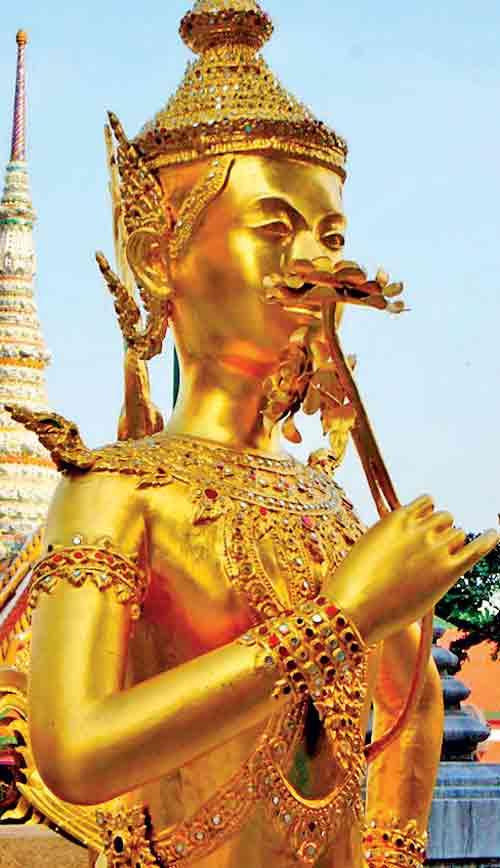
Beyond its visual splendor, Wat Arun remains an active place of worship. Monks in saffron robes move quietly along the temple grounds, their chants echoing softly through the air. The scent of incense drifts lazily, mingling with the faint aroma of lotus flowers offered by visitors.
Every day, locals come to pray for blessings, prosperity, and peace. It’s a reminder that despite its popularity among tourists, Wat Arun’s soul belongs to the people of Thailand. There’s a deep sense of respect here a feeling that this isn’t just a historical monument, but a living, breathing part of Bangkok’s spiritual identity.
If you arrive early in the morning, before the crowds, you might find yourself nearly alone in the temple courtyard. The air is cool, the light gentle, and the only sounds are the fluttering of pigeons and the rhythmic beat of temple bells. It’s in those quiet moments that you truly feel the power of Wat Arun; calm, sacred, eternal.
One of the most enchanting aspects of visiting Wat Arun is the journey itself. The temple is located across the river from the Grand Palace and Wat Pho, and the only way to get there is by boat.
You can take a short ferry ride from the Tha Tien Pier, a trip that lasts barely two minutes but feels like stepping through time. The river, known as the Chao Phraya, is the lifeblood of Bangkok. It carries long-tail boats, floating markets, dinner cruises, and barges laden with goods. As your ferry glides across, you’ll see the contrast that defines Bangkok; glittering skyscrapers rising behind ancient temples, neon lights reflecting on waters that have seen centuries of history.
Then, as Wat Arun’s white spires draw closer, you feel a quiet excitement that sense of approaching something sacred, something timeless.
While Wat Arun itself steals the spotlight, the surrounding area holds its own quiet magic. Wander through the narrow lanes behind the temple, and you’ll discover quaint riverside cafés, art galleries, and local markets where life unfolds at a slower pace.
You can enjoy a refreshing bowl of mango sticky rice or sip on iced lemongrass tea while watching monks paddle across the river in the afternoon light. Many travelers also visit nearby temples like Wat Kalayanamit or take a sunset cruise along the Chao Phraya, where Wat Arun becomes the radiant centerpiece of the skyline.
Even if you’ve seen a hundred temples before, Wat Arun has a way of feeling personal as if it was built not just to impress, but to connect.
There’s something deeply meditative about Wat Arun. It doesn’t rush you; it invites you to slow down, to breathe, to look closer. Each porcelain petal, each step up its narrow stairs, feels like a reminder of patience and devotion; qualities that have shaped Thai culture for centuries. It’s a place that reminds you that beauty doesn’t always shout sometimes, it simply shines quietly like the first light of dawn.
Bangkok is full of wonders from the shimmering Grand Palace to the vibrant chaos of Chatuchak Market. But Wat Arun stands apart. It’s not just an architectural masterpiece it’s a symbol of renewal, of hope, of the delicate balance between light and shadow.
When you stand before it the porcelain glinting under the sun, the river flowing gently at its feet, and the city buzzing just beyond you realize that this temple isn’t only about religion or history. It’s about the timeless human desire to reach for something higher, something beautiful.
Whether you’re a spiritual traveler seeking meaning, a photographer chasing light, or simply someone in search of wonder, Wat Arun will stay with you long after you’ve left. Because when you visit the Temple of Dawn, you don’t just see Bangkok you feel it.
